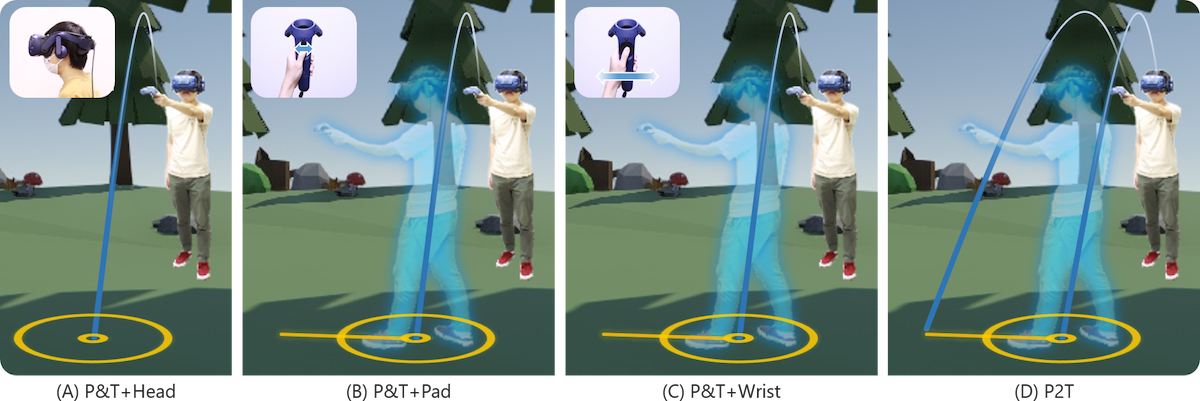Point & Teleport with Orientation Specification, Revisited: Is Natural Turning Always Superior? 👆
Shohei Mori1, Satoshi Hashiguchi2, Fumihisa Shibata2, and Asako Kimura2
1Graz University of Technology, 2Ritsumeikan University
Journal of Information Processing (JIP)

Abstract Point & teleport (P&T) is an artificial locomotion technique that enables users to travel in unlimited space in virtual reality. While recent P&T techniques assign orientation control to an additional axis, these techniques suffer from increased complexity in controls and limited performance. Researchers concluded that teleportation, followed by a self-orientation adjustment by physically turning around, is preferable and that P&T with orientation specification can be optional. However, P&T has not been tested under a seated condition, where the orientation control may advantageously perform. Therefore, in this paper, we reevaluate P&T with orientation specifications while the users are seated. Nonetheless, for consistent alignment with the results in preceding research, we evaluate the accuracy while the users are standing. Knowing that additional cognitive load may badly affect the performance, we present a new P&T design, points to teleport (P2T), with minimal complexity in mind (i.e., point twice sequentially to determine the future location and then orientation, which mimics classic P&T that requires users to turn around for orientation specification). Thus, we revisit P&T with orientation specification.
@article{mori jip23,
title={Point & Teleport with Orientation Specification, Revisited: Is Natural Turning Always Superior?},
author={Mori, Shohei and Hashiguchi, Satoshi and Shibata, Fumihisa and Kimura, Asako},
journal={Journal of Information Processing},
volume={31},
pages={392--403},
year={2023},
doi={10.2197/ipsjjip.31.392}
}